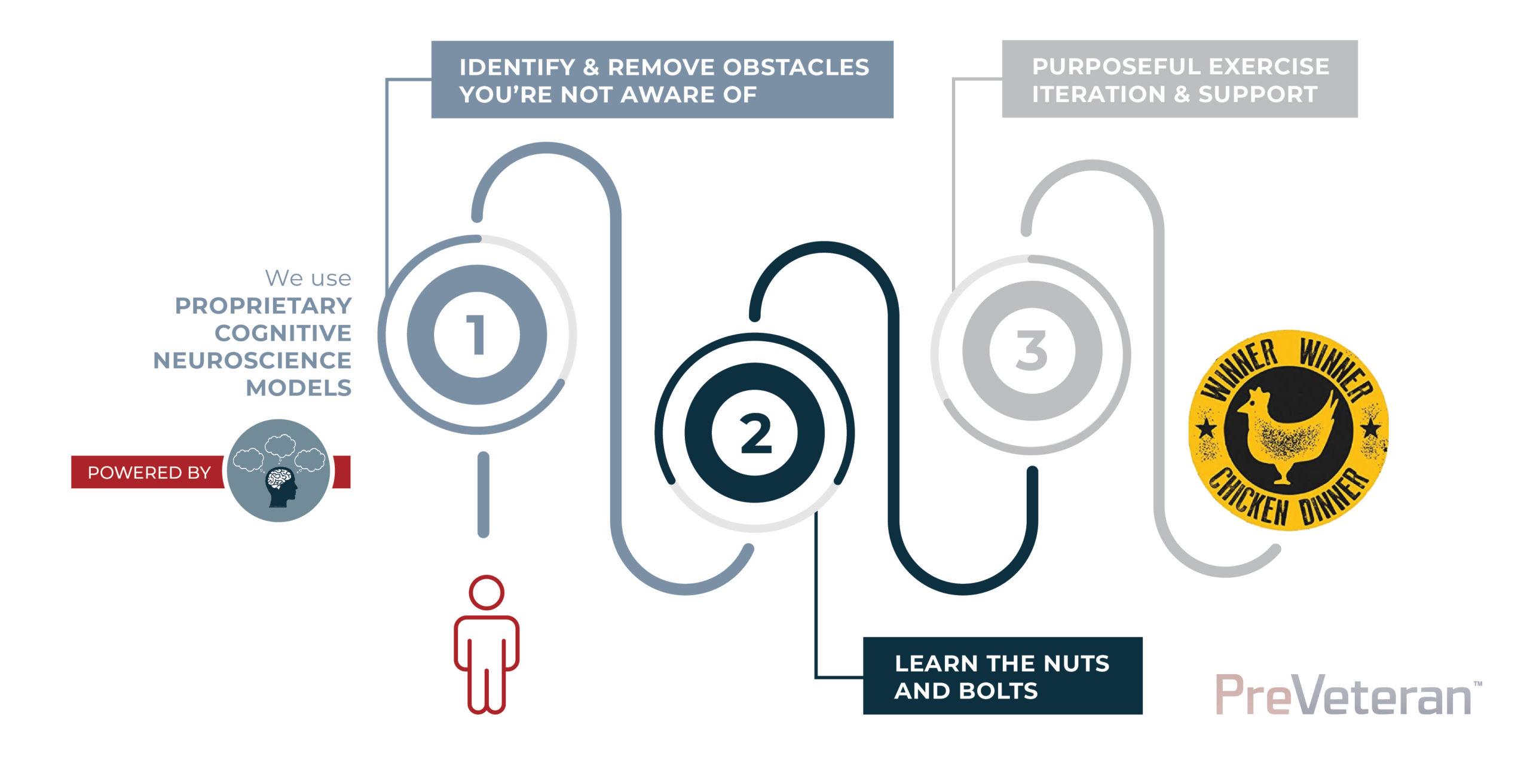Here are some important percentages for you transitioning military members:
- 100% of you will have to transition from the military
- 90%+ of you will become employees
- 70% of that 90% will become employees within the private sector
The question for those of you who want to become employees is, “What’s your model to prepare for post-military employment?” When I say “model” I mean the action you are going to take to ensure that you have a successful post-military employment outcome.
If that question has you scratching your head and wondering what your model is, don’t feel bad. I’ve interviewed hundreds of people and asked them that very question. More often than not, my question is greeted with thoughtful silence.
Background
Societies and communities need a common language to help people be aware of and stay engaged in addressing and overcoming problems. Isn’t it telling that, as a military population over the past 30 years, we haven’t spoken in terms of creating a model for transition and simply accepted (and have become dependent on) TAP and the associated research to create a functional program for all?
What kind of employment outcomes have we gotten from this approach that completely defined the system for 30 years? We cover this in great detail in our previous article, “The Elephant in the Room.” It shows that the outcomes are bad, with significantly high unemployment rates and very poor retention rates.
With an underperforming program that is far too general, I think it’s fair to say that most people have had to cobble together their own transition model in the hopes of helping themselves to a higher chance of post-military employment success.
Common Approaches People Are Taking
In the absence of a functional individual transition model, and encouraged by Big Tech’s promise of the magical advantages of interconnectedness, many have begun leveraging technology to try to create a successful transition.
Here are some common examples:
- Social Media—Scouring social media sites, particularly LinkedIn and Facebook, for insights from others on transition
- Mentoring—Connecting and learning from a person who has “been there and done that”
- Networking—Connecting with a more knowledgeable individual in the hope that something valuable may be gained
- Checklists and resources—No shortage of these
- Podcasts—Listening to others tell their story, or learning more about a subject of interest
Will These Approaches Work?
I want to be honest in my assessment here: maybe—because there will be outliers, but they are in the minority.
Why the emphasis on maybe? Here’s why.
Take a look at that list above and tell me what those items have in common. There probably are different ways to look at the list, but here are a couple of things that stand out to me:
- When listening to others you are seeking out their experience and trying to use that information to make better decisions for yourself. On the surface, this makes perfect sense but misses one huge piece of the puzzle: What YOU want to do. Unless you know first what you want to do, all of this information will just stir different ideas and spin your wheels rather than help you move out in a productive and efficient direction.
- All of these activities are snippets of data that you need to patch into your own transition without any roadmap or “model” for how to do that. In other words, you are attempting to piece together a very complex and individual tapestry without real direction or a certainty that it will work. Making matters worse (and more confusing), there are some people out there who have not transitioned themselves, but who are telling other people what they need to do to be successful.
PreVeteran Has An Individual Model For You
If you’re sick and tired of being stressed because you can’t see a clear path forward in your transition and find yourself not knowing what questions to ask while networking or being mentored, we understand and can help.
Our proprietary 3-step model is different from any other model out there. As you can see below, in Step 1 we leverage cognitive neuroscience principles to identify and remove obstacles you’re not aware of. In Step 2, and with those obstacles lowered or removed, we can then begin filling your brain with highly relevant information that will make you successful. And finally, in Step 3 we put you through dedicated exercise iteration and provide you support.

Want to find the most effective way to clear your head and get ready for employment?
Sign up for our Employment Prep Course on the website now.


![Pick Up the Six [Podcast] with PreVeteran Founder, Jason C. Anderson](https://preveteran.com/wp-content/uploads/2021/08/PU6.png)